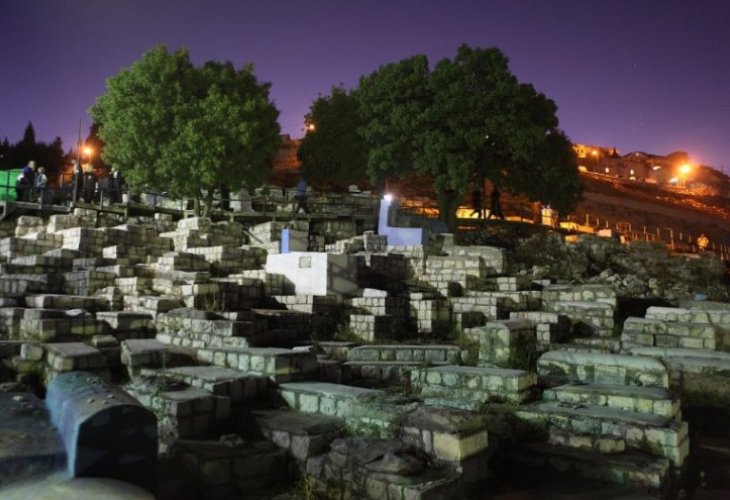Torah Personalities
The Ari Hakadosh: Master of Kabbalah in Tzfat’s Golden Age
Revealing the soul of Torah, Rabbi Yitzchak Luria transformed Jewish mysticism and the city of Tzfat forever

From Jerusalem to Egypt: A Hidden Flame Ignites
Rabbi Yitzchak Ashkenazi Luria, known as the Ari Hakadosh (the Holy Ari), was the greatest Kabbalist of Tzfat during its golden age over 450 years ago. Born in Jerusalem in 1534 to a Sephardic mother and an Ashkenazic father from the famed Luria family—descended from Rashi and, through him, from David Hamelech—his early life was shaped by both tragedy and providence.
At just eight years old, the Ari lost his father, Rabbi Shlomo. He and his mother moved to Egypt, where they lived with a wealthy uncle who would later give the Ari his daughter as a wife. In Egypt, he studied under two of the greatest scholars of the time: Rabbi David ibn Zimra (the Radbaz) and Rabbi Bezalel Ashkenazi, compiler of the Shita Mekubetzet on the Talmud. In fact, the Ari even contributed to that monumental work.
Beyond his vast knowledge in all areas of Torah, the Ari spent days in solitude by the Nile River, returning home only for Shabbat. It was there that he began encountering deep mystical truths.
At age 21, he first encountered the Zohar, a moment that would change the course of his life. Immersing himself in its depths, he began a life of spiritual isolation and contemplation. At age 36, the prophet Eliyahu appeared to him and instructed him to return to the Land of Israel and reveal the secrets of Kabbalah to a select group of students, chief among them, Rabbi Chaim Vital.
Mystical Leadership and Enduring Legacy
The Ari's arrival in Tzfat marked a turning point in Jewish mysticism. Though he taught only a few disciples, his teachings revolutionized the understanding of Kabbalah. He interpreted the Zohar in a new way, introduced new systems for mystical intentions during mitzvot (Divine commandments), and taught about rectifying the soul, reincarnation, and Divine unifications (yichudim).
Before his passing, the elder Kabbalist Rabbi Moshe Cordovero (the Ramak) told his disciples that the one who would see a pillar of fire following his funeral procession would be his spiritual heir. Only the Ari saw the pillar, and from that day on, he was recognized as the leader of Tzfat's mystical circle.
His disciples, known as Gurei haAri (Cubs of the Ari), included some of the greatest sages of the era: Rabbi Chaim Vital, Rabbi Moshe Alshich, Rabbi Shlomo Alkabetz, Rabbi Yosef Karo, Rabbi Eliyahu de Vidas, and many others. Together they would journey to Meron, to the tomb of Rabbi Shimon Bar Yochai, where the Ari would pray and commune with Rabbi Shimon Bar Yochai's soul and receive Divine secrets.
Rabbi Chaim Vital later wrote that the Ari could spend weeks studying a single passage of Zohar, often refusing angelic help to understand it, insisting on reaching spiritual heights through his own toil.
Writings, Teachings, and the Joy of Shabbat
Though the Ari himself left no writings, his teachings were carefully recorded by Rabbi Chaim Vital in a vast collection known as Kitvei haAri (The Writings of the Ari), totaling eighteen volumes. The Ari also restructured Jewish prayer through intricate mystical intentions now known as Kavanot HaAri. Many Kabbalists today still pray from Siddur HaAri.
The Ari famously said that all his achievements came through simchah shel mitzvah, the joy of fulfilling commandments. He warned against sadness, which he saw as a subtle form of heresy. “Whoever truly believes is always joyful,” he taught. Likewise, he described anger as spiritually devastating, stating that if one could see the darkened state of the soul during a moment of rage, they would be terrified.
Shabbat held a special place in his life. On Fridays, the Ari would don four white garments and go out with his students into the fields singing Lecha Dodi. His Shabbat table was adorned with sublime intentions and mystical practices from beginning to end. The Ari is credited with the hymns Asader LeSeudata and Azamer Bishvachin, which include his signature acrostic: “Ani Yitzchak ben Shlomo Luria.”
Final Days and Eternal Resting Place
The Ari passed away on the 5th of the Jewish month of Av, 1572, at the young age of 38, during a plague that swept through Tzfat. He is buried in the ancient cemetery there, alongside his teachers and fellow sages: the Ramak, the Radbaz, the Mabit, Rabbi Shlomo Alkabetz, and Rabbi Elazar Azkari.
At the foot of the cemetery lies the famed Mikveh HaAri, a spring-fed ritual bath whose waters have flowed uninterrupted for centuries. It is said that the Ari himself used this mikveh, and some believe his body was immersed in it before burial. According to tradition, one who immerses in this mikveh will merit to repent before death.
The Ari Hakadosh revealed the inner soul of Torah and ignited a fire in Jewish mysticism that continues to burn centuries later. Though his life was brief, his legacy is eternal.

